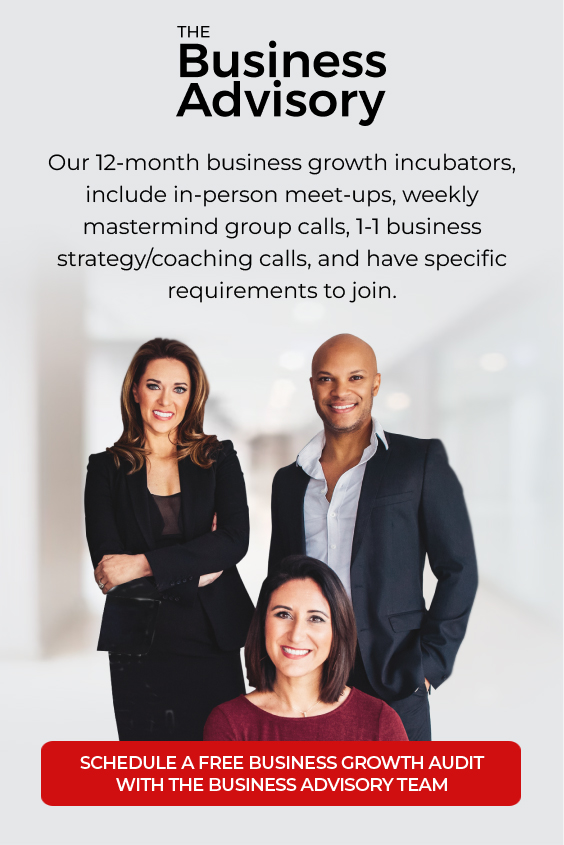Career progression is one of the most important and most exciting things that you can participate as a leader. It’s also one of your greatest responsibilities: because it’s the key to retaining high performers on your team.
Statistics show that people want to stay in an environment where they can grow, be recognized and rewarded for their efforts. They thrive in places where their contributions are recognized, valued and rewarded, and they know that the work they do matters.
One of the best ways to show your team that you value them and want to retain them, is to create career progression opportunities within your company. We just celebrated three internal promotions at Kelly Roach Coaching, and it’s one of the most inspiring feelings to watch your employees set big goals and achieve their dreams from within your company.
Whether you are a CEO running a small company, or a division leader for a department within an entrepreneurial company: if you have individuals reporting to you, career progression should be a huge part of your role if it’s not already.
Now: in large companies, where there’s lots of opportunity for growth, multiple departments to move around in, and an abundance of positions available – this may seem obvious. But, one of the most asked questions I get is: how do you create career progression opportunities if you’re a company of just two or three? What if you’re just making your first hire? Let’s take a look at what that looks like:
If your vision is to scale your business and grow beyond your current size, you need to think ahead.
Your job as a leader is vision casting. And, if your vision is to grow beyond just having two or three people working for you, you need to know what the next step looks like.
Take a look at every role in your company. Ask yourself: at what level of success in this role will we have enough productivity and profitability to hire the next person for this department?
Remember that many times, especially in the early stages of a company, individuals are juggling multiple jobs in their role. For example: each company typically has their 5 core departments: sales, marketing, finance, service delivery, and operations. However, at the startup phase, your first hire may be a hybrid of sales and marketing assistant.
Whatever their responsibilities are, it should be communicated what their goals within that particular role are, with a clear path toward achieving them – which at that point, they would be promoted or the role would be split into two, and the next hire for that department or division is made.
Example: in the beginning years of Kelly Roach Coaching, we had two employees. One was handling operations and billing, while the other was handling sales and marketing. As each of those team members hit their productivity and profitability targets, we then split out the role and began to hire individuals for each of these key areas.
Not sure what that looks like for your organization? Schedule a strategy call with our team here, and we can map out your growth plan.
Career progression is not something you do once you hit a certain stage of business. It should begin from the day you hire your first employee.
If you want to not only retain employees, but keep them engaged adn productive, they need to know what their next step in the company is – point blank. What are they working toward, and what happens when they get there?
You don’t need to have the job description completely outlined, but you do need to know where they’re headed and what’s next. You can’t ever get to the point of splitting the role or making your next hire if you’re not thinking ahead at what that looks like in your organization.
If you don’t have the vision, don’t be surprised when your employees aren’t engaged, motivated, or psyched about where the company is headed. If you don’t have any idea as the leader, they can’t possibly have any idea.
Casting the vision and enrolling your team in the vision is a critical piece of the puzzle: I talk more about that in Bigger Than You: The Entrepreneur’s Guide to Building an Unstoppable Team.
Clear productivity and profitability targets are required for each person in your company. What are the milestones and deliverables required to get there? And, what’s in it for them?
When you think about career progression, productivity and peak performance : you need to be communicating the “what’s in it for them” to your employees.
What are THEIR goals? What are the things on THEIR dream board? What personal milestones are they working toward? If you are directly managing people and don’t know the answer, it’s a problem, that’s a problem.
Leadership is an opportunity for you to be a facilitator of someone accomplishing their biggest goals and dreams – and when you play that role in someone’s life, you will see them double down and want to invest in the growth of your company, because there’s a clear picture of what’s in it for them.
Many times, we’re so clear on where we want to take our company, and while that’s important – you also need to know what your employees are trying to accomplish and what matters most to them – coupled with a plan to help them achieve it.
Let this be a reminder to make sure that each employee in your company has a clear career progression plan, vision and roadmap to follow, and that as a leader, you are engaging in meaningful conversations about how you can support them in achieving those goals.
If leadership is new to you, I invite you to explore our coaching programs, where we focus on hiring, leadership development, team retention, career progression productivity and profitability. Visit our consulting page to learn more about our Legacy Builders and Legacy Leaders programs and what might be a fit for you as you grow and scale your company.











